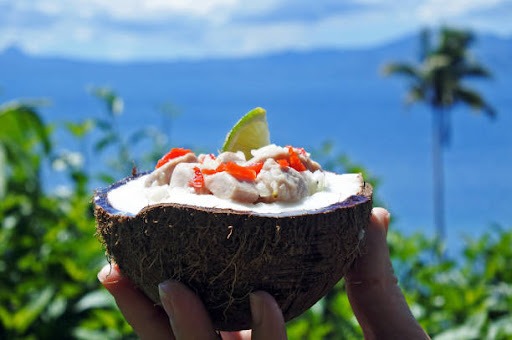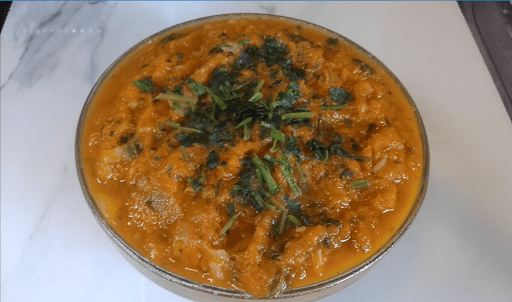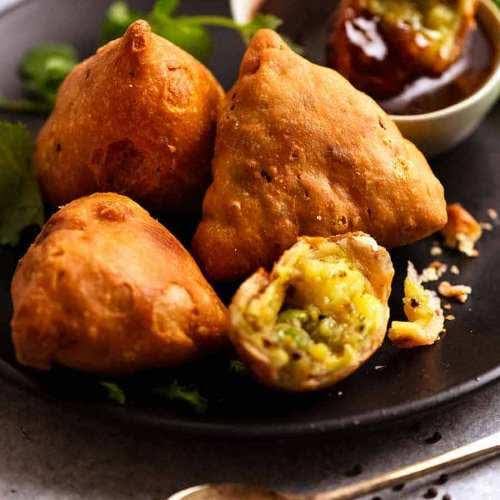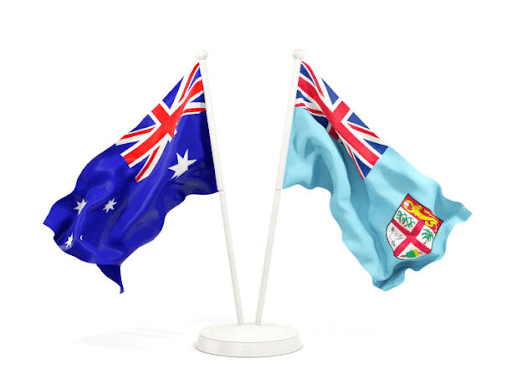15 must-try Fijian dishes
Fiji is a multicultural country, and its cuisine reflects its diversity.
Correct, Fiji is a foodie’s paradise!
Fiji’s long-and-tried food culture started in the first century when settlers from Melanasia travelled to the islands. Traditionally, Fijian cuisine is a mixture of forage- and farm-based ingredients, including root vegetables like cassava, taro, and yams. Protein-wise, they consume a variety of seafood.
Over time since the first century, the Polynesians arrived, then the Dutch and English explorers. The colonisers brought rice, flour, and tea, which became part of the local diet.
Eventually, the Indian labourers arrived too. All the different cultures merged together, birthing a new brand of cuisine.
Today, Fiji is home to a range of mouth-watering cuisines. Follow this comprehensive list to make sure that you don’t miss out!
Fijian lovo
The traditional Fijian cooking method is called lovo, where the food is cooked above hot coals in a hole in the ground. The chef wraps the meat, vegetables, and palusami (taro leaves filled with corned beef, onions, and coconut cream), then buries the food in the hole with banana leaves, soil, or potato sacks for hours.
The result is a yummy treat. Tasting a lovo meal is an experience you don’t want to miss!
Usually, the Fijians cook lovo for special occasions only, but some resorts specially prepare lovo for their guests.
Kava
Made from the crushed root of the yaqona, kava is thought of as a drug and is consumed as a tea. The Pacific Islanders have practised the tradition for hundreds of years. In Fiji, kava is served in a large communal bowl as part of a ceremony, sometimes to welcome guests. Fijian families often gather together for kava, thus it is also known as “Fiji time”.
Palusami
A curry with a stewed spinach taste, Palusami is made of boiled Taro leaves that are mashed into a paste. The dish’s traditional recipe uses practically no spices or chillies; its taste comes mostly from coconut cream, onions, and meat (sometimes corn beef when fresh meat isn’t available). Despite the lack of spices and chillies, palusami’s rich flavour does not disappoint.
Rourou
Rourou is a dish where taro leaves are cooked like spinach, often used as an ingredient in palusami. Rourou can also be made into rourou peti, which is chilli, onions, coconut milk, and fish wrapped in taro leaves.
Kokoda
A delicious dish of raw fish marinated in lime and lemon juice, then embellished with coconut milk, chillies, onions, tomatoes, and other ingredients, kokoda is an excellent entree dish. It is usually served in a coconut shell or large clamshell.
Grilled mahi-mahi
Mahi-mahi is a type of fish found in the deep waters around Fiji. It is commonly used as an ingredient in kokoda. Mahi-mahi can also be enjoyed grilled, served with a generous helping of vegetables.
Babakau
Also known as Fijian fried bread. You may enjoy your babakau with jam, butter, and fruits. Sometimes, a serving of babakau may come with a layer of icing sugar or cinnamon.
Cawaki
Cawaki is the local name for sea urchin, the only edible species of urchin in Fiji. The Cawaki-collection process is headed by the women, who sell their harvest at the markets for a handsome income. The dish is much loved in the coastal villages.
Baigan Valo
“Baigan” means eggplant in Hindi. Baigan Valo is basically eggplant stuffed with fish and spicy sauce, finished with a coconut cream topping. As you might have guessed, this fusion dish has Indian influence, a credit to the Indian labourers who migrated to Fiji from their homeland.
Duruku
This dish is known as the “Fijian asparagus”. It is the unopened flower of a cane shoot. There are two types of duruka: red and green; Fiji has both. The red one is harder in texture than its green counterpart. Daruka is found in coconut milk and curries, and is widely used in Fijian cooking.
Taro (dalo)
As mentioned before, taro is a staple in Fiji. In fact, it is so beloved that the locals celebrate Taro Day on the first full moon of every May. Like potatoes and yams, taro may be fried as chips or mashed like potatoes, then served as a side dish. More importantly, it is a vegetable with one of the highest energy sources, so you know the Fijians got this right.
Cassava cake
Cassava is a root vegetable, a common ingredient in sweet desserts. Cassava cake resembles sticky rice, and is served with butter, preserved fruit, or fresh fruit.
Fijian roti
Similar to baigan valo, roti was brought over by the Indians migrants. Roti has been a Fijian favourite for ages. It is cooked over a tava and served with curries. It is also often used as a wrap at food stalls all over Fiji.
Chicken chop suey
This might not be a widely known fact, but Fiji has quite a sizable Chinese community. Thus it is no surprise that the country has some good Chinese food. Chicken chop suey is a staple on fast food menus and Chinese takeaways on Viti Levu. The flavour of the dish is a contrast to Fijian traditional food, so consider this option if you would like variety.
Tropical fruits
Fiji is a tropical country, so juicy fruits are abundant — sea grapes, papayas, bananas, mangoes, rambutans, melons, pineapples, and grapefruits — you want it, they’ve got it.
One fruit you should not miss out on is the soursop. Soursops are nicknamed “cancer-busters”, thanks to their high level of vitamins. You may eat the fruit whole, or you may taste it in any of its many reincarnations: a drink, ice-cream, sorbet, cake, jelly, or jam.
June to September is harvest season in Fiji, so keep an extra look out for this miraculous fruit then.
Bon appetit!












